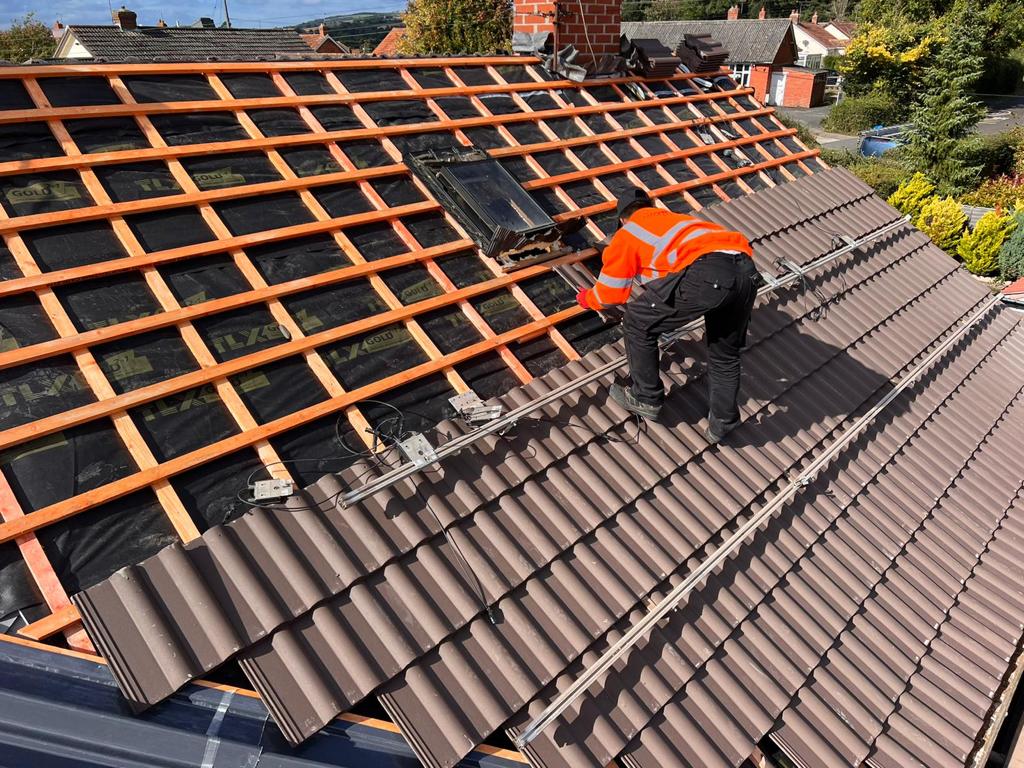
When should I use a roofer?
So, When should I use a roofer?
Many homeowners delay calling a roofer until there is a major problem, but by that point, the damage may already be expensive to fix. Knowing when to use a roofer helps protect your home, extend the life of your roof, and save money in the long term. Whether you own an older property or a new build, regular maintenance and timely repairs are key to keeping your roof safe and efficient.
Signs That You Need a Roofer
Most roof problems start small and become serious only if ignored. Some of the most common signs that you should contact a roofing professional include:
-
Water stains appearing on ceilings or walls
-
Missing or cracked tiles after strong winds
-
Moss or algae build-up on roof surfaces
-
Blocked gutters causing overflow during rain
-
Damp smells in the loft or attic
-
Sagging roof sections or uneven ridgelines
Even if these signs seem minor, they often indicate deeper issues beneath the surface. Calling a professional roofer early can prevent structural damage and avoid high repair costs later on.
Roof Repairs
Minor issues like leaks or slipped tiles can usually be resolved quickly with professional roof repairs. These repairs help prevent water from penetrating roof layers and damaging internal structures. A trained roofer will locate the source of the problem, repair or replace damaged tiles, and inspect the surrounding area to ensure everything remains watertight.
After Storms or High Winds
Brighton and the wider Sussex area often experience strong coastal winds and heavy rain. After severe weather, it’s sensible to inspect your roof for visible damage or debris. Loose flashing, cracked tiles, or displaced ridge caps can all lead to leaks if left untreated. Arranging a professional inspection soon after bad weather can prevent long-term deterioration.
When Planning Home Improvements
If you are adding an extension or converting a loft, consulting a roofer during the planning stage ensures that the new structure connects seamlessly with your existing roof. New roofs and extensions must comply with building regulations and provide proper drainage and insulation. A professional roofer will design a system that looks consistent and performs efficiently.
When Your Roof Is Over 20 Years Old
Most roofs last between 20 and 30 years depending on materials and maintenance. Older roofs naturally begin to show wear and may no longer offer full protection. If your roof is nearing this age, it’s wise to have it inspected annually. A professional can advise whether simple repairs will suffice or if a full replacement might be the better long-term option.
Maintaining Flat Roofs
Flat roofs are popular for garages, extensions, and commercial properties. However, they can develop issues such as pooling water or cracked membranes. Regular inspections help identify these early. Modern flat roofs made from EPDM rubber, felt, or GRP fibreglass are much more durable, but still need periodic care to ensure they remain sealed and secure.
Dealing with Moss or Algae
Moss can make a roof look untidy, but it also traps moisture and causes tiles to deteriorate. This is especially common in shaded or coastal areas. Professional moss removal helps clear debris safely without damaging tiles. Regular cleaning keeps your roof functional and improves drainage.
Roofline and Guttering Issues
Your roofline includes essential parts like soffits, fascias, and guttering. When these are damaged or blocked, water can back up into the roof space and walls. Upgrading to modern soffits and fascias made from UPVC provides long-term protection against rot and moisture while reducing maintenance needs.
When Tiles or Slates Start Failing
Tile and slate roofs are known for their durability, but they can still crack or loosen over time. High winds, frost, or movement in the structure can all cause damage. Skilled roofers can replace sections of tiled roofs or carry out maintenance on slate roofs to restore full performance. Catching these issues early helps avoid water damage and preserves the roof’s appearance.
Chimney and Flashing Repairs
Chimneys are particularly vulnerable to weather damage. Cracked bricks or loose lead flashing can cause leaks and instability. Professional chimney repairs strengthen the structure and prevent further deterioration. A roofer can also inspect flashing around vents, skylights, and valleys to ensure they are fully sealed.
Routine Inspections and Preventive Care
A regular inspection is one of the best ways to prevent unexpected roofing problems. A professional will check tiles, seals, flashings, and rooflines for wear or weakness. This kind of preventive maintenance can extend the life of your roof and save on larger repair bills in the future.
Why Use a Professional Roofer?
While it may be tempting to handle small repairs yourself, roofing work requires specialist tools, training, and safety equipment. A professional roofer ensures repairs meet safety and building standards. They also provide insurance-backed guarantees and certified workmanship. Checking trusted platforms like Checkatrade can help you find reliable tradespeople with verified reviews.
Choosing the Right Time to Act
Homeowners often delay roof work because the problem doesn’t seem urgent. However, waiting too long can make repairs more complicated and expensive. It’s best to arrange an inspection if you notice leaks, missing tiles, or visible signs of wear. Acting early saves time, reduces disruption, and prevents internal water damage.
Conclusion
Your roof protects your entire home, so staying proactive with maintenance and inspections is vital. Whether you need repairs, tile replacement, or roofline upgrades, working with a professional ensures safety and long-term value.
For honest advice or to arrange a free quote, contact us. Rated Roofers Ltd provides reliable, professional roofing services across Lancing, Brighton, and the wider Sussex area.




Comment (0)